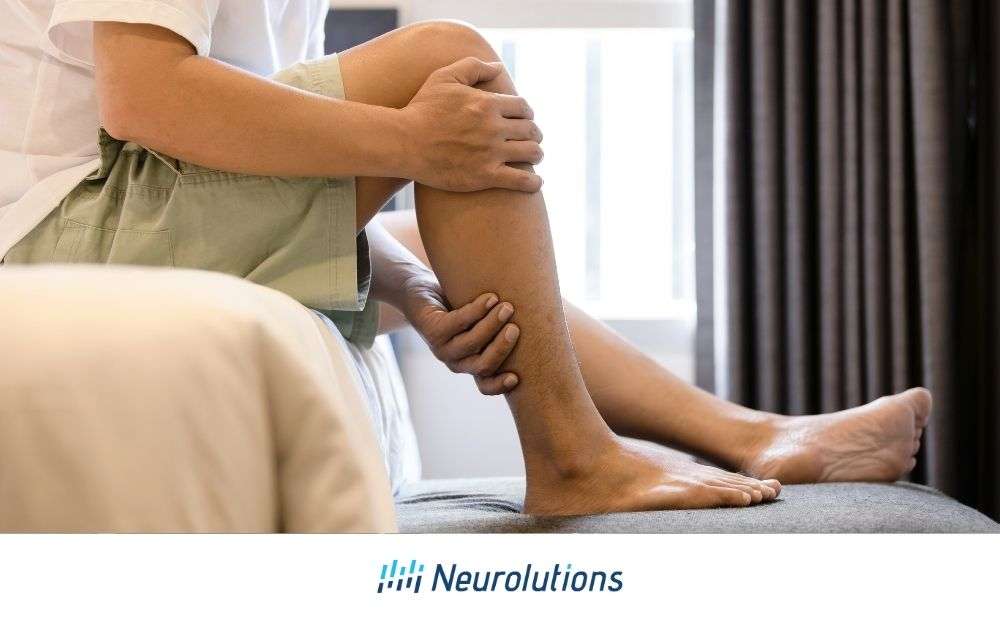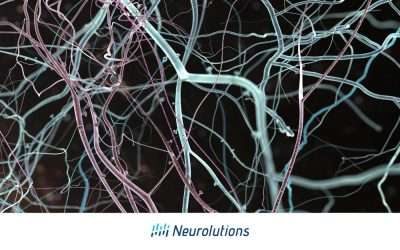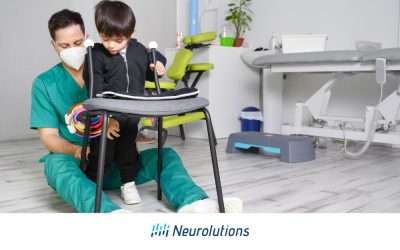Clonus and Strokes
Clonus is a frequently encountered secondary effect in stroke survivors that manifests as uncontrollable and rhythmic muscle contractions (1). It is an abnormal reflex response that arises when a muscle is rapidly stretched. Clonus can result in difficulties with movement and function, varying from compromised arm function resulting from upper extremity clonus to gait dysfunction caused by ankle clonus.
After experiencing a stroke, there can be miscommunication between the motor and sensory regions of the brain’s cerebral cortex and other subcortical regions, causing dysregulation in the control of muscle tone that leads to the characteristic clonus contractions (2). Although often mistaken for tremors, clonus is a distinct condition that requires separate treatment.
Despite the debilitating impact of clonus on post-stroke life, the brain’s ability to reorganize neural networks, or neuroplasticity, provides a possibility for recovery. This article describes the signs and symptoms of clonus as well as effective treatments.
Types of Clonus
Clonus can manifest in various parts of the body, such as the ankle, knee, and wrist. The most common area for clonus is the ankle joint.
A healthcare provider can observe ankle clonus by quickly flexing a patient’s foot towards the shin. If clonus is present, the foot will then involuntarily and rapidly bounce up and down. The bouncing may stop abruptly, gradually fade away, or it may continue until there is pressure placed at the bottom of the foot. Although not as common, clonus may also occur in the wrist, fingers, or jaw.
Distinguishing Clonus from Other Conditions
Clonus can be mistaken for other conditions like tremors, myoclonus and spasticity. These are all distinct conditions that require separate treatment interventions. For that reason, it is important to know and understand the differences between these conditions.
Tremors are an involuntary shaking or quivering movement of a body part with a variety of types and causes (3). Myoclonus is a brief, involuntary, irregular twitching of a muscle or muscle group. There are several different forms of myoclonus (4) from harmless hiccups to more severe cases affecting movement, eating, or talking (5). In contrast to tremors and myoclonus, clonus is an unusual reflex reaction to muscle stretching, characterized by rhythmic movement and bouncing. All three responses can be side effects of certain central nervous system conditions.
Take a closer look: this is an example of wrist clonus. (6)
Clonus vs Spasticity – What’s the Difference?
While many stroke survivors and care partners may confuse these two medical terms, clonus and spasticity are completely different and exhibit different effects on the body. While spasticity and clonus can be related phenomena connected to upper motor neuron lesions and normal regulation of muscle tone and reflexes, not all stroke survivors with spasticity (heightened muscle tone) will necessarily exhibit clonus.
Here are some distinguishing features between spasticity and clonus:
Spasticity:
- Muscle stiffness and resistance to passive movement. Severity levels vary depending on the individual and certain triggers in the environment.
- The resistance to stretch is greater at higher speeds when a “quick stretch” is applied to the muscle group. This is known as “velocity-dependent” resistance.
- Opposing muscle groups of the joint may both be affected, but not always.
- Learn more about Flexor Synergy, Spasticity, and Stroke.
Clonus:
- Typically involves a rapid series of muscle contractions and relaxations.
- Most commonly observed in the ankle (ankle clonus) but can occur in other joints.
- Often elicited by a quick stretch of the muscle, such as a brisk dorsiflexion of the foot.
What Can Cause Clonus?
Clonus is often associated with hyperexcitability of the stretch reflex and is commonly observed in conditions where there is damage or dysfunction in the upper motor neurons.
Clonus typically occurs as a result of an upper motor neuron lesion, meaning there has been damage to specific nerve cells in the brain and spinal cord that support movement of the body. Upper motor neuron lesions interfere with the “normal” neural signals that move from the brain to the spinal cord, traveling to the muscles.
In the case of stroke, the blood flow to the brain gets interrupted due to either a blockage from an ischemic stroke or a bleed from a hemorrhagic stroke. Therefore, clonus may be present as a manifestation of the disruption within the brain and nervous system.
Other Neurological Conditions that May Cause Clonus
In addition to stroke, there are several other neurological conditions that may cause clonus.
These include (7):
- Traumatic Brain Injuries
- Brain Tumor
- Brain Infections (meningitis or encephalitis)
- Spinal Cord Injuries
- Cerebral Palsy
- Multiple Sclerosis
- Amyotrophic Lateral Sclerosis (ALS)
Symptoms of Clonus
Every stroke is different. If you experience clonus, your symptoms may be more or less severe than those of others with clonus.
Certain symptoms might include (7):
- Rhythmic shaking stimulated by a quick stretch or position change
- Increased muscle tone or pain
- Involuntary movements like bending or crossing of the arm or leg
- Decreased balance due to rhythmic muscle contractions
- Muscle fatigue due to muscle contractions for extended periods of time
- Disturbed sleep which may lead to excessive daytime tiredness
- Muscle and/or joint contractures if joints and muscles are not appropriately stretched to maintain length
Make sure to monitor your specific symptoms of clonus and report them to your rehabilitation care team to assist with diagnosis, management, and treatment.
Diagnosis of Clonus
There are specific assessments a medical doctor may perform in order to diagnose a stroke survivor with clonus. First, the medical doctor will perform a physical examination and review of medical history to gain a complete understanding of your symptoms and overall health. During a neurological exam, observation proves highly effective for diagnosing clonus.
Other tests may include (8):
- Specific blood test
- MRI scan of your brain or spinal cord
- CT scan
- Nerve conduction tests
- Electromyogram
- Spinal tap (lumbar puncture)
Management of Clonus
If you are experiencing clonus following a stroke or other neurological-related condition or injury, it is feasible to manage your symptoms and maintain a thriving life through a comprehensive treatment plan. The components of your plan will depend on the severity of your clonus.
Some general treatments may include (7):
- Stretching exercises
- Applying a cold compress
- Applying hot packs
- Magnesium supplements to help muscles relax
- Oral medications : Examples include Baclofen, Tizanidine, Diazepam, Gabapentin, etc.
- Local injections: Botulinum toxin injections, commonly known by the brand name Botox, is sometimes used to manage clonus, particularly in cases of spasticity-related clonus.
- Techniques to manage clonus during daily activities
Occupational and Physical Therapy Interventions
For best practice of clonus treatment and management occupational and physical therapy should be a part of your rehabilitation care plan. During your occupational and/or physical therapy sessions, your therapist will show you how to stretch and strengthen your affected muscles, promoting increased mobility and functionality. Rehabilitative exercises concentrate on mastering specific movements to aid neuroplasticity and retrain neural networks. Exercises such as yoga may also be recommended to help improve muscle tone, lengthening, stress reduction, and general nervous system relaxation.
If needed, your therapist may recommend splints and/or braces to provide support for joints. A stroke survivor should discuss with their doctor and therapist if they think a brace or splint would be beneficial in the stroke recovery journey.
If therapy, medication, and home remedies do not seem to work, a medical doctor may recommend surgery. Surgery is often considered the last option, as it involves severing the nerve passageways that cause abnormal muscle movement. Orthopedic surgery that lengthens muscles may be necessary if the condition lended to permanent and long-term soft tissue shortening that is not correctable through conservative treatment.
Living with Clonus
Clonus in the upper and lower extremities can greatly affect someone’s ability to perform daily tasks. Experiencing clonus may cause personal hygiene, dressing, or even feeding oneself to be challenging. A stroke survivor should discuss these concerns with their medical doctor and care partner as it will help to better understand the circumstances of their clonus.
A survivor may experience clonus during their stroke recovery journey, which can be frustrating and may feel embarrassing. It is important for the survivor to remember that it’s not their fault. Clonus can range from inconvenient to disabling. However, discussing it and advocating oneself with a therapist and doctor can help a survivor learn to manage their clonus and lead a more fulfilling life.
References
- “Clonus: Definition, Causes, Treatment & Tests.” Cleveland Clinic, https://my.clevelandclinic.org/health/symptoms/24822-clonus. Accessed 9 Aug. 2023.
- Kassam, Adam, et al. “Managing Upper Extremity Clonus With Intramuscular Botulinum Toxin–A Injections in a Patient Poststroke.” PM&R, vol. 7, no. 5, May 2015, pp. 542–46. ScienceDirect, https://doi.org/10.1016/j.pmrj.2014.10.011.
- “Tremors.” Cleveland Clinic, https://www.clevelandclinicmeded.com/medicalpubs/diseasemanagement/neurology/tremors/. Accessed 25 Oct. 2023.
- Neuro Exam: Clonus – StrokeSciences. https://strokesciences.com/neuro-exam-clonus/. Accessed 9 Aug. 2023.
- “Myoclonus.” National Institute of Neurological Disorders and Stroke,https://www.ninds.nih.gov/health-information/disorders/myoclonus. Accessed 25 Oct. 2023.
- Wrist Clonus | NEJM. www.youtube.com, https://www.youtube.com/watch?v=aZCGF-nJEKU. Accessed 9 Aug. 2023.
- “Clonus After Stroke: Causes, Symptoms, and Treatment.” Flint Rehab, 6 Apr. 2023, https://www.flintrehab.com/clonus-after-stroke/.
- Bhimani, Rozina, and Lisa Anderson. “Clinical Understanding of Spasticity: Implications for Practice.” Rehabilitation Research and Practice, vol. 2014, 2014, p. 279175. PubMed Central, https://doi.org/10.1155/2014/279175.




